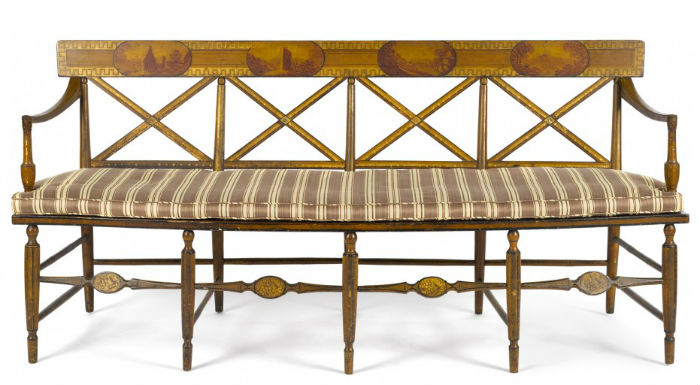
NEW YORK – Sheraton is the neoclassical style of English furniture that came into vogue around 1785 and enjoyed a 35-year run that lasted through 1820. It is named for the British furniture designer Thomas Sheraton (1751-1806), who wrote two books that exemplify the style named in his honor: The Cabinet Dictionary (1803) of engraving designs and The Cabinetmaker’s and Upholsterer’s Drawing Book (1791) of furniture patterns. Both were popular during the era. The Sheraton style borrowed elements from the Louis XVI style and featured round, tapered legs, fluting and contrasting veneer inlays. The furniture took lightweight, rectilinear forms, using satinwood, mahogany and tulipwood, sycamore and rosewood for inlaid decorations, (though painted finishes and brass fittings can also be found). Among the most common motifs applied to Sheraton-style furniture included swags, husks, flutings, festoons and rams’ heads.
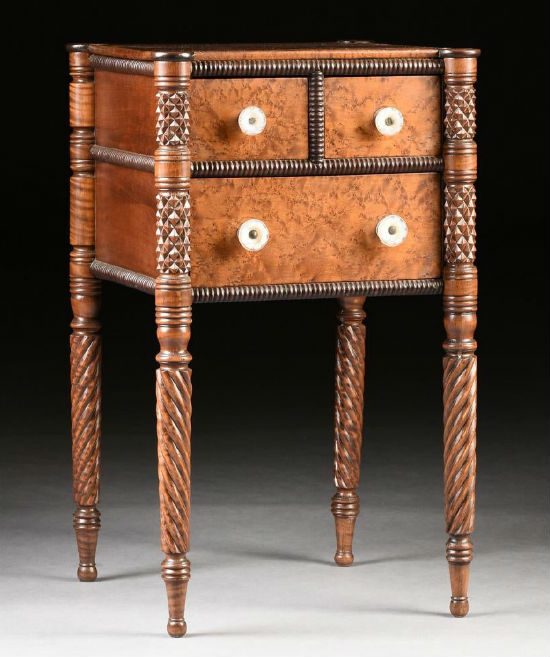
The popularity of the Sheraton style could be attributed, in part, to the fact that it brought the Neoclassical taste of renowned architects of the day, such as Robert Adam, to within reach of the middle class. And, because it corresponded so closely with the contemporary Directoire style of France, the Sheraton style enjoyed widespread popularity in France and throughout the rest of Europe. Further, it was the most reproduced style in the United States during the Federal period. There are two sad elements to the Sheraton story. First, the phrase “Sheraton style” was coined by 19th century collectors and dealers. They did so to credit Thomas Sheraton, but posthumously. The furniture maker actually produced very little furniture in the last 20 years of his life and, while alive, he was mostly broke and underappreciated. He may have inspired one of the great achievements of England’s golden age of furniture but did not live long enough to see it.
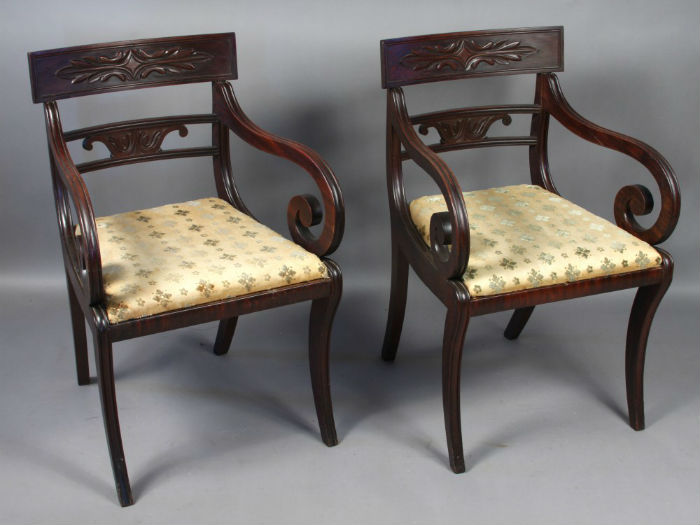
Second, there are many in the industry who feel that, in recent years, the market demand for Sheraton-style furniture has been moribund. “Sheraton, as well as Chippendale and Hepplewhite, are experiencing a lack of interest amongst the younger generation,” said Mary Westcott, an appraiser with Kaminski Auctions in Beverly, Mass. “I don’t see a significant change in the next few years unless there is a strong appreciation in quality within the young set.” But Westcott was quick to add, “Some of the best quality period and reproduced furniture is readily available at reasonable prices. This is the best time to purchase furniture for your homes that is substantially made and will last for centuries. Sheraton furniture was popular in its day because it was simpler in form and made from woods that were indigenous to the areas where it was being made. It was the use of the tapered fluted leg that appealed to the eye, in contrast to the cabriole leg of the Queen Anne period or the decorative characteristics of Chippendale. This simplicity made it easier to reproduce, therefore making it more available to the masses.”
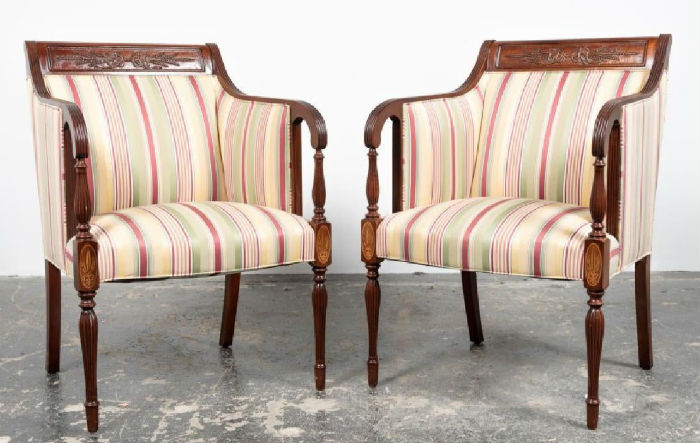
James Pook of Pook & Pook Inc. in Downingtown, Pa., agreed the market is flat now. “The popularity of Sheraton furniture over the past five years has definitely gone down,” Pook said. “That trend will probably continue, at least in the near future. As with most areas of antique collecting, the exceptional pieces are still commanding exceptional prices, but the low to mid-range pieces are in a decline.”
Dwight Stevens of Stevens Auction Co. in Aberdeen, Miss., added, “Dealers used to come to our sales looking for Sheraton pieces, but not so anymore.”
David Johnson, president and owner of Greenwich Auction in Stamford, Connecticut, struck a more optimistic chord when he said, “Even in a depressed market for antique brown furniture, we’re still able to sell Sheraton-style furniture because of the mostly clean lines. We do especially well with Sheraton-style dining room table and chair sets, which are sort of the classic look for a formal dining room. We also sell Sheraton-style chests of drawers whenever we get them in. Both the period pieces as well as the high-end reproductions by companies like Baker sell whenever we get them.”
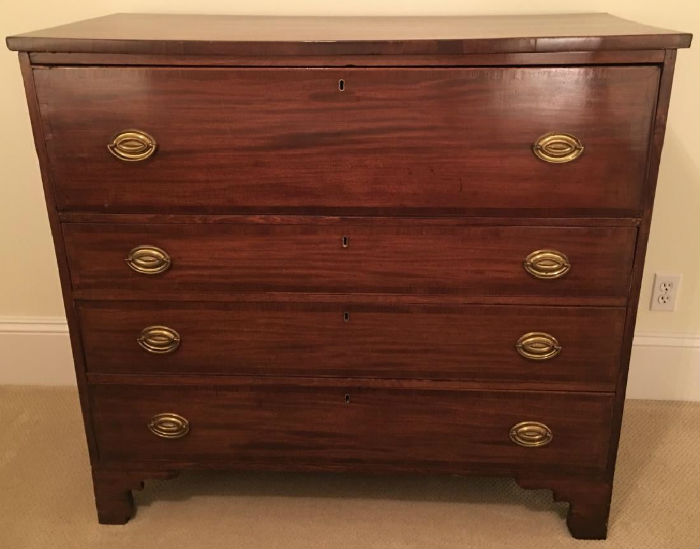
That positive sentiment was echoed by Ray Simpson of Simpson Galleries in Houston, Texas, who said, “Although traditional antique furniture is trending in the downward direction, there are still a few styles that command good attention. The Sheraton style of furniture and particularly period pieces and examples of the highest design quality are bringing strong prices.” Simpson pointed out, “With its neoclassical inspired lines and effortless class, the Sheraton style was a figure of English furniture excellence. The Sheraton style transcends modern-day differences between traditional furniture and the modern style desired by collectors in today’s market. The concept of shape and form within Sheraton’s creations bring a delicate sense of style, together with the functionality needed to serve its purpose.”
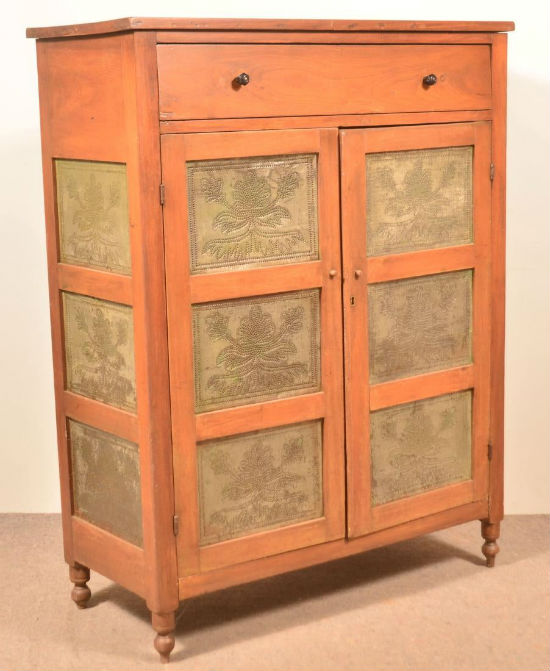
Even after his style began to catch on while he was alive, Thomas Sheraton still had to supplement his income by giving drawing lessons in London. It was the aforementioned books he wrote that eventually made his work so popular. The designs he presented in them spread across England, Europe and eventually the U.S., where they were embraced by renowned furniture makers such as Duncan Phyfe, Samuel McIntyre and John and Thomas Seymour, as part of the American Federal style. But Sheraton rarely made any of these designs himself. In fact, some historians believe he never made any of them.
# # #



